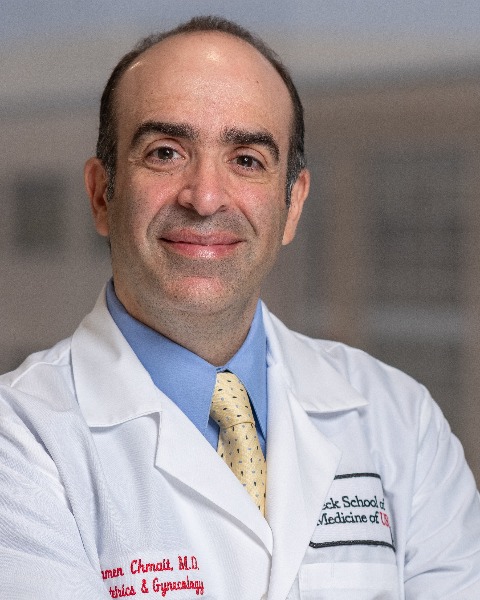Fetus
Poster Session 1
(224) Umbilical cord occlusion of twin reversed arterial perfusion (TRAP) sequence: laser photocoagulation vs radiofrequency ablation

Emi Komatsu, MD
Los Angeles General Hospital + USC Medical Center
Los Angeles, CA, United States- CH
Catherine Hamzeh, BS
University of Southern California
Los Angeles, CA, United States - AL
Arlyn Llanes, MHA, RN
University of Southern California
Los Angeles, CA, United States - LK
Lisa M. Korst, MD, PhD
Childbirth Research Associates
North Hollywood, CA, United States 
Ramen H. Chmait, MD (he/him/his)
Director, Los Angeles Fetal Surgery; Professor, Department of Obstetrics and Gynecology
University of Southern California
Los Angeles, CA, United States
Presenting Author(s)
Coauthor(s)
Primary Author(s)
Study Design: This is a retrospective cohort study of all patients seen between 2006-2023 with high-risk TRAP sequence who underwent UCO at a gestational age (GA) of 16-26 weeks. Criteria used to classify TRAP sequence patients as high-risk and eligible for UCO included: (1) abdominal circumference of the acardiac twin greater than or equal to that of the pump twin, (2) polyhydramnios (maximum vertical pocket > 8 cm), (3) critically abnormal Doppler studies in the pump twin, (4) pump twin hydrops, or (5) monoamniotic twins. The primary outcome was 30-day survival of the pump twin.
Results:
Of 77 consecutive high-risk TRAP sequence patients that underwent UCO, perinatal outcomes were available in 74, of which 37 underwent UCO by laser and 37 by RFA. All gestations had at least 1 high-risk characteristic (Table); 63 were twins, 10 were triplets and 1 was quadruplets. The average GA of UCO was similar between the laser and RFA groups (20.5 ± 2.3 vs 20.7 ± 3.1 weeks, p=0.987). Five fetal demises occurred, 1 in the laser group (1/37, 2.7%) and 4 in the RFA group (4/37, 10.8%) (p=0.358). Postoperative pump twin membrane detachment was a risk factor for demise (4/7 [57.1%] vs 10/67 [14.9%], OR 7.69 [1.47-33.33], p=0.015). The average GA at delivery was similar between groups (35.2 ± 4.6 vs 34.5 ± 5.7 weeks, p=0.812) groups. The 30-day neonatal survival rate was 91.9% (34/37) in the laser group and 89.2% (33/37) in the RFA group (aOR: 1.42 [0.27-7.46], p= 0.677).
Conclusion: No significant differences in perinatal outcomes were identified in patients with high-risk TRAP sequence who underwent UCO by laser vs RFA.

